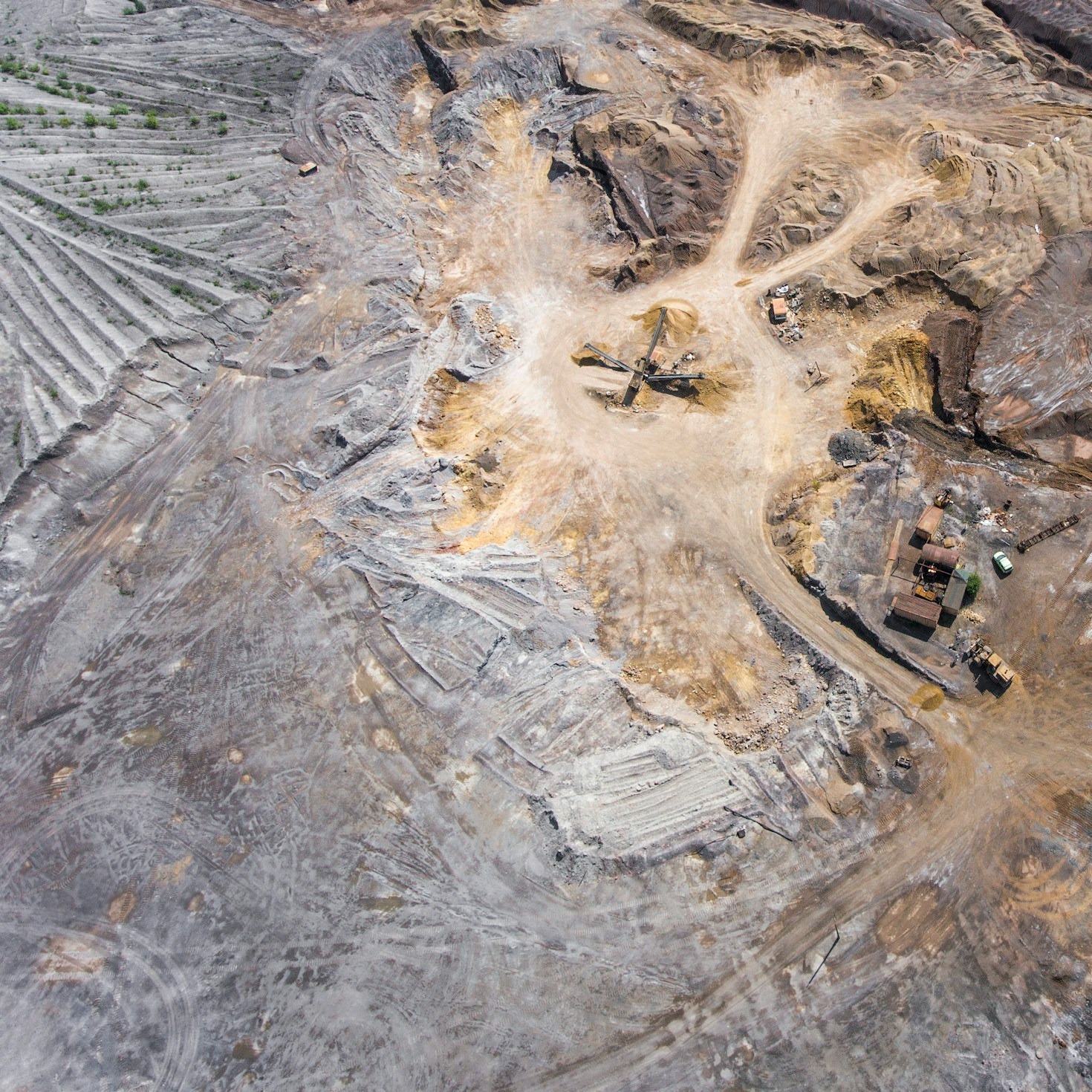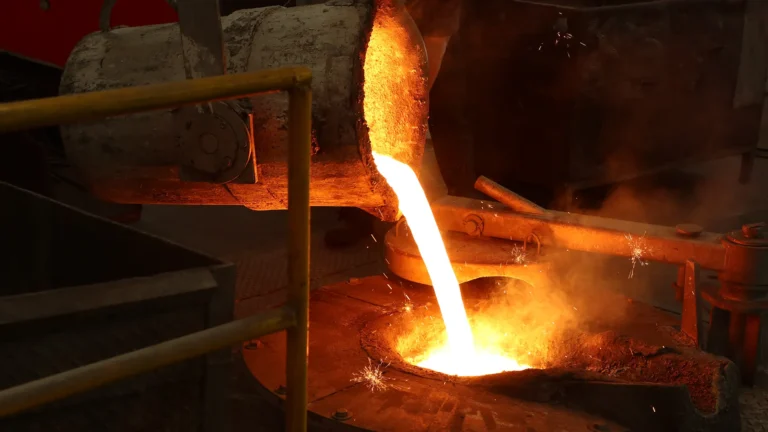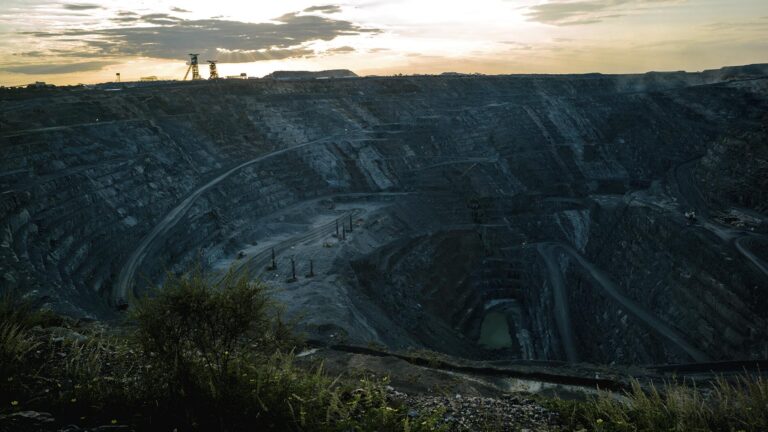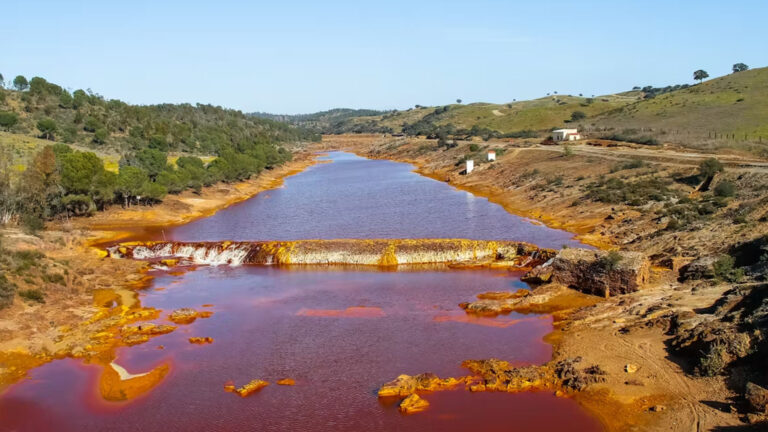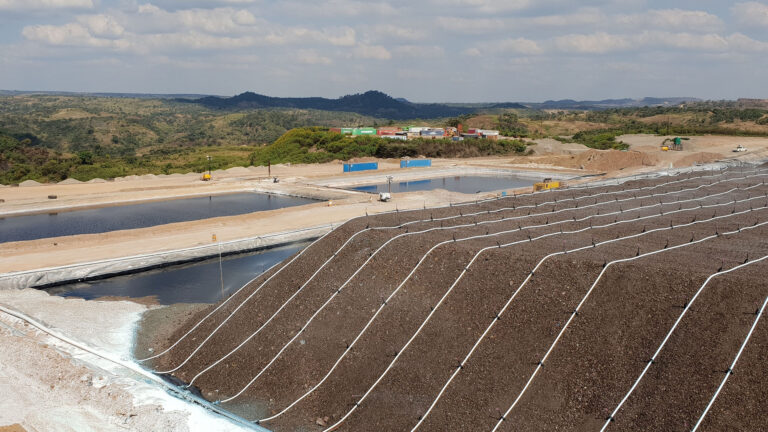Mining projects are complex ventures that span many years, often decades, and involve a series of critical phases from the initial discovery of a mineral deposit to the final closure and rehabilitation of the site. Understanding the lifecycle of a mining project provides valuable insight into the economic, environmental, and social considerations that shape each stage of the project.
The mine lifecycle encompasses all stages from exploration and development through to closure and post-mining land use.
Here is a comprehensive overview of the key phases in a mining project lifecycle.
What is the Mining Lifecycle?
The mining lifecycle is a comprehensive, multi-stage process that underpins the development of responsible and sustainable mining operations.
It guides mining companies through a series of phases: exploration and prospecting, planning and evaluation, construction, production, and rehabilitation and reclamation—each designed to maximize the efficient extraction of mineral resources while safeguarding the health and safety of workers and surrounding communities.
The five stages of the mining lifecycle are phases that guide the development of a responsible and sustainable mining operation. The lifecycle promotes efficient extraction of mineral resources and protects the health and safety of workers and communities.
It drives economic growth and mandates land rehabilitation. When a mining project begins, the initial exploration and prospecting phase is crucial for identifying potential mineral deposits and assessing environmental and social impacts.
Every new mining project has its requirements and needs a plan to transition it from discovery to production. All miners follow the same general process, which forms the basis of mine development. A thorough understanding of the lifecycle informs investment decisions, ensuring strategic planning and the responsible development of resources.
By following the mining lifecycle, mining projects can drive economic growth, create jobs, and contribute to local and national development.
Understanding this lifecycle is essential for all stakeholders, as it ensures that mining operations are conducted with a strong commitment to sustainability, regulatory compliance, and long-term value creation.
What are the Key Stages in the Mining Lifecycle?
Here are the stages in the mining lifecycle that have remained consistent over the years, with innovation at each stage shaping them to become more robust, efficient, and effective in producing high-quality mineral products.
1. Exploration & Prospecting
This stage, known as the exploration phase or exploration stage, marks the beginning of a mining project and is vital to its success. The exploration phase focuses on identifying a mineral resource that can be mined profitably. Modern exploration utilizes advanced geoscientific techniques to mitigate risk and enhance accuracy.
Activities Include:
- Geological surface mapping and geophysical surveys
- Soil and rock sampling
- Geochemical analysis
- Remote sensing and satellite imagery
- More detailed surveys after initial surveys to collect geological data and identify potential mining targets
- Drilling programs to define the resource extent and grade
Key Considerations:
- Technical viability of the ore body
- Environmental sensitivity of the area
- Environmental concerns, including understanding and addressing environmental impacts early in the exploration phase
- Social and cultural impact, including sites of significance
- Water and soil testing for baseline data
The prospecting phase builds upon initial findings through exploratory drilling, enabling companies to model geological ore bodies in 2D or 3D and estimate potential yields based on the collected data.
The exploration phase assesses resources by providing critical data for resource evaluation, land use planning, and informing future land restoration efforts, thereby improving rehabilitation and long-term environmental sustainability.
Identification and assessment of mineral deposits are achieved using methods such as geological mapping, geophysical surveys, and geochemical analysis.
Community and stakeholder engagement begins here, especially to understand local concerns and gain social license to operate.
2. Planning & Evaluation
After a viable deposit is identified, the project proceeds to the planning and evaluation stage, where it is assessed for economic, environmental, and logistical feasibility.
Activities Include:
- Pre-feasibility and feasibility studies: The pre-feasibility study is a higher-level analysis that evaluates technical and economic viability beyond initial scoping, while the feasibility study provides a detailed assessment of whether the deposit can be mined profitably, considering capital costs, potential returns, and project risks.
- Metallurgical testing and geotechnical testing: Metallurgical testing is crucial for understanding mineralogy, optimizing processing techniques, and designing efficient ore recovery and tailings management systems.
- Mine design and engineering
- Environmental and Social Impact Assessments (ESIA)
- Permitting and regulatory compliance
Key Considerations:
- Project economics and return on investment
- Economic concerns, such as capital efficiency and profitability, as well as environmental risks, including safety and ecological impacts, are critical factors in decision-making.
- Environmental risk and mitigation strategies
- Community consultation and benefit sharing
- Infrastructure development (roads, power, water, etc.)
- This stage facilitates project management by aligning stakeholders, supporting planning and coordination, and ensuring regulatory compliance.
Robust planning of risk projects by identifying and mitigating safety, environmental, and economic risks before major capital outlays are committed. This helps avoid significant financial investments until risks are addressed.
Careful planning and evaluation also contribute to maximising resource extraction by optimizing mine design and operational efficiency. This phase also includes stakeholder mapping and communication to ensure local communities, regulators, and investors are aligned.
3. Construction
The construction phase is a critical stage that transforms a planned mining operation into a working site. This phase involves extensive site preparation and mine construction, requiring significant capital investment and engineering precision.
Activities Include:
- Land clearing and site preparation
- Building of haul roads and access routes
- Construction of processing facilities and tailings dams
- Installation of power generation and water treatment systems
- Establishing water management systems as part of site preparation
- Development of accommodation and support infrastructure
Construction phase transitions mark the process of moving from resource development to an operational mining facility, involving extensive site preparation, infrastructure development, and stakeholder engagement to ensure a smooth progression to commercial operations.
Key Considerations:
- Health and safety compliance
- Local employment and procurement policies
- Environmental protection during high-impact activities
- Continuous engagement with community and government stakeholders
- Building a proactive community relationship and a proactive community relationship based on transparency, mutual understanding, and ongoing engagement
This phase is the most visible and often under scrutiny, so transparency and proactive issue management are crucial. Maintaining environmental integrity and fulfilling social commitments builds the foundation for long-term success.
The construction phase also enables the mine to generate economic value for stakeholders and the local economy.
4. Operation and Production
This is the revenue-generating phase of a mining project where the deposit is actively mined, processed, and sold.
Depending on the deposit type and economics, it may involve open-pit, underground, or in-situ methods. Surface mining, including open pit mining and strip mining, is a primary extraction method used to access minerals near the earth’s surface, such as iron ore, due to their cost-effectiveness and lower risks.
Underground mining and specialized methods are employed for deeper deposits, often requiring the development of an underground mine and the use of specialized extraction techniques.
Surface and underground mining are the main approaches, and the choice between them depends on deposit characteristics, safety, environmental, and economic concerns.
Activities Include:
- Mine operations (drilling, blasting, hauling)
- Ore processing (crushing, grinding, flotation, leaching, smelting)
- Tailings and waste management
- Water recycling and air quality control
- Continuous safety training and incident management
Key Considerations:
- Maximizing recovery while minimizing waste
- Continuous environmental monitoring and reporting
- Worker safety and operational excellence
- Maintaining stakeholder confidence and social license
- Balancing economic demands with sustainability and stakeholder engagement
- Managing the mine site for ongoing compliance and operational excellence
This phase requires strong operational management, rigorous adherence to health and safety laws, and a long-term commitment to achieving sustainability goals. It is during this stage that the mine will begin generating economic value from resource extraction.
Innovation in automation, digital tracking, and ESG reporting is common here to ensure competitive advantage and compliance.
5. Rehabilitation & Reclamation
Mining is inherently a finite activity. Once a mine reaches the end of its productive life, the focus shifts to the fifth and final stage of the mining lifecycle: closure, reclamation, and land rehabilitation.
Activities Include:
- Decommissioning of plant and equipment
- Removal of hazardous material
- Regrading and stabilizing landforms
- Replanting and reforestation efforts
- Long-term environmental monitoring
Key Considerations:
- Returning land to a stable, safe, and productive use
- Protecting water quality and biodiversity
- Managing residual liabilities and post-closure care
- Enabling socio-economic transition for workers and communities
Rehabilitation planning begins early—ideally in the feasibility phase—and is updated continuously throughout the mine’s lifecycle.
Detailed environmental studies are essential in informing closure and reclamation strategies, ensuring compliance with regulatory requirements and responsible mine closure.
Implementing a comprehensive rehabilitation program, designed at the outset and refined as operations progress, is critical for successful site restoration.
Land management solutions are utilized to support all stages of resource development, simplifying land access, rehabilitation, and regulatory compliance by streamlining approvals and considering environmental and cultural factors.
Progressive rehabilitation during the operational phase helps reduce closure costs and improves environmental outcomes. Involving the community in determining post-mining land use adds social value and ensures the mine site is restored for future generations.
Post-Closure Monitoring
Post-closure monitoring is a vital phase in the mining lifecycle, ensuring that former mine sites remain safe and environmentally stable long after mining operations have ceased.
Once a mine is closed, mining companies are responsible for ongoing monitoring to verify the effectiveness of rehabilitation and reclamation measures. This includes regular inspections, environmental sampling, and analysis to detect any lingering hazards or impacts on the land and surrounding ecosystems.
Comprehensive post-closure monitoring helps fulfill social and environmental responsibilities, providing assurance to regulators and communities that the site will not pose long-term risks.
A well-structured monitoring program, backed by adequate resources and commitment, is essential for maintaining trust and upholding the legacy of responsible mine closure.
Risk Management in the Mining Lifecycle
Risk management is a cornerstone of successful mining projects, enabling mining companies to navigate the complex challenges inherent in the mining lifecycle.
From exploration to mine closure, mining operations face a range of environmental, social, and economic risks that can impact project outcomes and the well-being of communities.
Effective risk management involves systematically identifying, assessing, and mitigating these risks through comprehensive planning and adaptive strategies. Mining companies develop and regularly update risk management plans to address changing conditions and emerging threats, ensuring regulatory compliance and operational resilience.
By prioritizing proactive risk management, mining companies can safeguard their social license to operate, protect stakeholders, and support the long-term sustainability of their mining projects.
Permitting and Regulatory Compliance
Permitting and regulatory compliance are foundational to every mining project, ensuring that mining companies operate within established legal and ethical frameworks. Before any exploration, construction, or production activities can commence, mining companies must obtain a range of permits and approvals from the relevant regulatory authorities.
This process requires the submission of detailed documentation, such as environmental impact assessments and social responsibility plans, to demonstrate the project’s technical and economic viability.
Maintaining regulatory compliance throughout the mining lifecycle is essential for protecting the health and safety of workers and local communities, as well as for upholding environmental and social responsibilities.
Ongoing compliance helps mining companies avoid costly delays, legal penalties, and reputational risks, supporting the smooth progression of mining operations from start to finish.
Community Engagement and Participation
Community engagement and participation are integral to the success and sustainability of mining projects.
Mining companies must actively involve local communities, indigenous groups, and other stakeholders throughout the mining lifecycle to ensure their voices are heard and their interests are respected.
Building proactive community relationships based on transparency, accountability, and open communication helps identify and address potential concerns early, fostering trust and collaboration.
By inviting community participation in key decision-making processes—such as environmental impact assessments and mine closure planning—mining companies can achieve mutually beneficial outcomes and maintain regulatory compliance.
Effective engagement not only supports the social license to operate but also ensures that mining operations make positive contributions to local development and well-being.
In Summary: The Mining Project Lifecycle
The lifecycle of a mining project is a structured yet adaptive framework that balances economic returns with social and environmental stewardship. Each phase is interconnected and must be approached with strategic foresight and integrity. When executed responsibly, mining projects not only deliver value to shareholders but also contribute to national development, job creation, and environmental sustainability.
Stakeholder engagement throughout all project phases demonstrates the company’s commitment to responsibility, transparency, and fulfilling obligations. It forges an adaptive partnership that protects corporate reputation and achieves mutually beneficial outcomes for communities and the company and is crucial for earning the social credibility to operate responsibly across the mine’s lifespan.
Frequently Asked Questions (FAQ) About the Mining Project Lifecycle
What are the main stages of the mining project lifecycle?
The mining project lifecycle consists of five key stages: exploration and prospecting, planning and evaluation, construction, production, and rehabilitation and reclamation. Each stage plays a vital role in ensuring a responsible and sustainable mining operation.
Why is the exploration phase important?
The exploration phase is crucial because it identifies potential mineral deposits and assesses environmental and social impacts. It lays the foundation for all subsequent stages by determining the technical and economic viability of mining the resource.
How does planning and evaluation contribute to mining projects?
Planning and evaluation involve detailed feasibility studies, mine design, and assessments of environmental and social impacts. This stage de-risks the project by ensuring economic viability, environmental responsibility, and regulatory compliance before major capital investments.
What happens during the construction phase?
The construction phase transitions the project from planning to operation. It includes site preparation, building infrastructure such as roads, processing plants, and water management systems, as well as establishing support facilities, all while maintaining health, safety, and environmental standards.
What are the common mining methods used in production?
Surface mining (including open pit and strip mining) and underground mining are the primary extraction methods. The choice depends on deposit characteristics, environmental and economic concerns, and safety considerations.
Why is rehabilitation important after mining?
Rehabilitation restores the mine site to a stable, safe, and productive condition, protecting water quality, stabilizing the land, and reestablishing vegetation. It ensures long-term environmental sustainability and fulfills social and regulatory responsibilities.
How do mining companies engage with communities?
Community engagement is ongoing throughout the mining lifecycle. Companies establish transparent and proactive relationships with local stakeholders to address concerns, secure a social license, and achieve mutually beneficial outcomes.
What role does technology play in modern mining projects?
Technology enhances exploration accuracy, operational efficiency, safety, and environmental management. Innovations such as autonomous vehicles, digital monitoring, and advanced data analytics support sustainable and responsible mining practices
What is post-closure monitoring?
Post-closure monitoring ensures that rehabilitated mine sites remain safe and environmentally stable after mining ends. It involves regular inspections and environmental assessments to detect and manage any ongoing impacts.
How does risk management affect mining projects?
Risk management helps identify, assess, and mitigate environmental, social, and economic risks throughout the mining lifecycle. Effective risk management supports regulatory compliance, operational resilience, and the maintenance of social license to operate.

